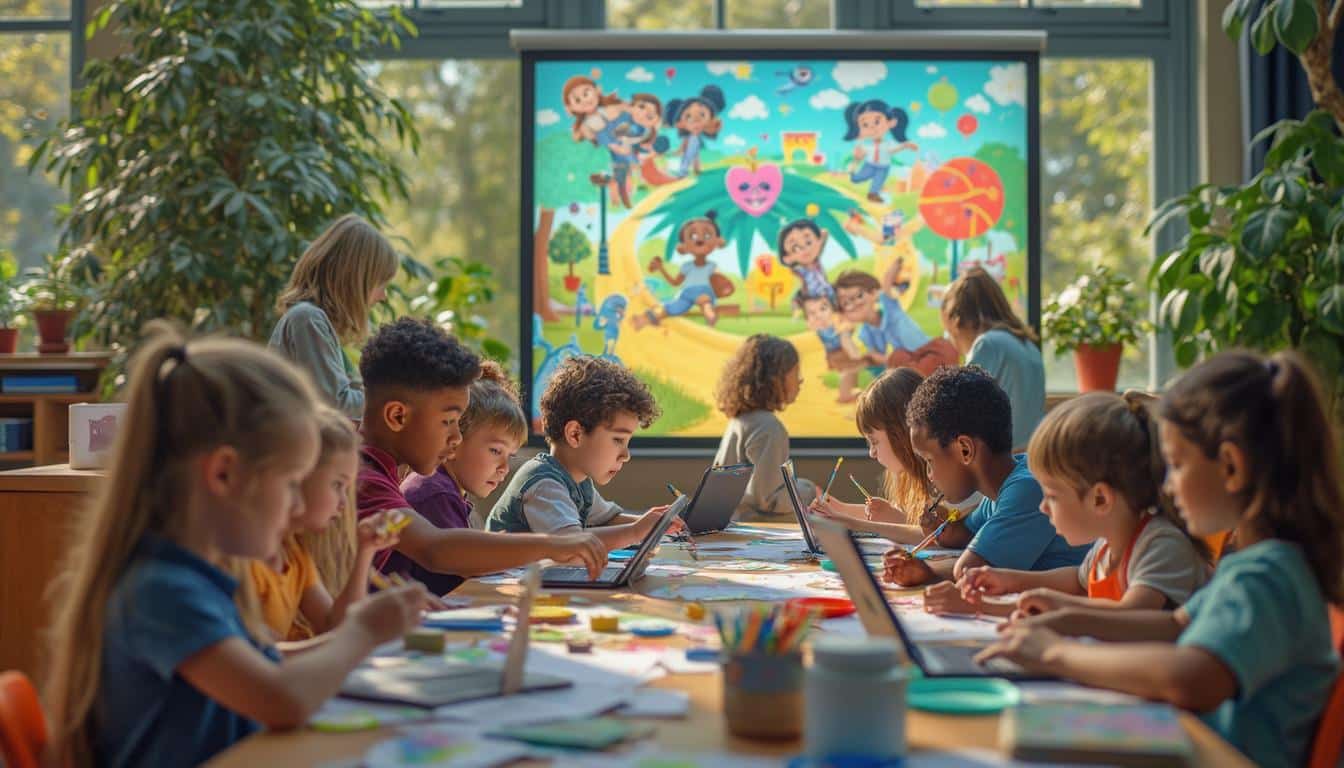In the digital age, where capturing attention is a real challenge, storytelling emerges as an essential tool to boost online creativity. By incorporating captivating narratives, brands can turn dry data into moving stories, allowing their audience to identify with and engage. This approach goes beyond simple narration and becomes a true leverage to create emotional connections, thus strengthening the company’s identity while generating customer interest. By emphasizing the human experience, storytelling makes every interaction more meaningful and memorable.
🔥 Nous recommandons Ideamap
Ideamap est l’outil idéal pour un brainstorming ou un projet collaboratif. Grâce son interface facile et à ses fonctions IA, Ideamap booste votre créativité tout en favorisant une meilleure organisation de vos idées pour atteindre vos objectifs.

Storytelling is much more than just a communication technique; it is a real vector of emotions that connects those who tell a story to their audience. When unveiled in an online environment, storytelling can become a powerful lever to stimulate creativity and innovation.
Firstly, the importance of storytelling lies in its ability to create an immersive universe. By looking into the foundations of this method, we understand that stories have this unique power to capture the audience’s attention. Rather than simply delivering facts or figures, narratives allow for a vision, a product, or a service to be presented in a way that resonates at the core of consumers. The emotional connection they establish enables brands to differentiate themselves in an often-saturated digital landscape.
For this technique to be effective, it is essential to understand one’s audience well. By defining their personas, creators can craft narratives that speak directly to the desires and needs of their audience. This involves using a language that is familiar to them, choosing relevant situations, and addressing themes that spark their interest. Instead of focusing solely on the product, storytelling must emphasize the customer and how they can benefit from this unique experience.
Secondly, the use of digital media offers a multitude of possibilities to enrich the narrative. Videos, podcasts, blog articles, and even social media posts can be used to convey this story. Each of these formats allows for different aspects of storytelling to be played upon: visual, auditory, and even interactive. This diversity makes each narrative more dynamic and engaging, pushing creativity to new heights.
It is also interesting to note that storytelling can be used to engage the community. By encouraging the sharing of personal stories or organizing storytelling contests, brands can create user-generated content that enriches the community while strengthening customer loyalty. This approach not only fosters collaboration but also sparks a creative momentum within the audience, promoting the exchange of ideas and experiences.
Storytelling techniques go beyond simple narration but also include methods that bring a strategic dimension. For example, the use of humor or surprising elements can capture attention and make the narrative memorable. In this regard, there are tools that help to organize these stories in a structured manner, contributing to their clarity and effectiveness. In this way, not only do stories captivate, but they also encourage action, engaging the audience to participate actively.
Thus, by integrating storytelling into a digital content strategy and playing on creativity, companies can transform their way of communicating online. Ultimately, using storytelling is not just about selling; it is primarily an opportunity to inspire, educate, and create authentic connections with one’s audience.















